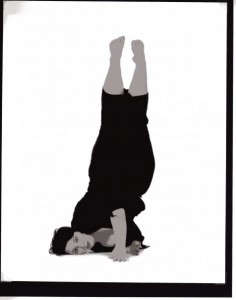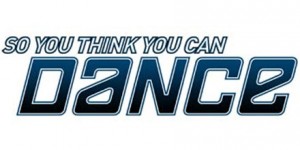by Kimberly Peterson
Something has been irking me lately despite the vast improvement in critique – thanks largely in part to the guest judges – which is the role of a dancer as a tool vs. the dancer making active intelligent choices. I want to discuss the role of choice, how it relates to power and how the use of choice takes a dancer from a mere “tool of the trade” to an active participant utilizing their choice to make intelligent artistic decisions. To do this I want to walk through three very important distinctions: tools v. choice; choice inside creative process; and process with artistic intelligence.
Tools v. Choice
A tool, to put it bluntly, is used. You don’t ask the hammer for it’s input in how you use it to drive a nail through a board, you don’t ask the clay to expand upon your vision for it’s future end product, and despite some of the best meaning critiques – dancers are all too often prized for their ability to conform to a choreographer’s vision without bringing in anything of themselves while simultaneously being asked to “connect” to that vision as well as connecting that vision to the audience.
Choice is imperative in that process. Dancers are not simply tools whose bodies are to be used like some inanimate object whose only value is in what they can produce in the end….Because dance is an art form that is inherently personal in its person-hood – political in its humanity – and present in its corporeal presentation, dancers have a task that necessitates an active role.
Comments which focus on the astounding technical feats that judges often praise as the measure of a versatile communicative dancer, only really represent one part of the whole. Dancers who are given choice are able to take the movement given to them and expand upon it by interpreting it through their own bodies and their own perceptions while linking it to the choreographic intent.
To never mention the choices of the dancers, to always revolve around the brilliance of a choreographer, negates the very necessary choices made by the dancers. Listen and you’ll never hear “that was a smart way to perform this” but you will hear about how smartly the choreographers used the dancers given to them. The emphasis is on dancers as tools.
Choice Inside Creative Process
As the audience is introduced to the work through process, dancers are often seen being silly and goofy, sometimes there is reference to the work not being finished in time. While brilliant for creating drama for the show and bringing the audience into the development of dance as pieces of work, this sets the stage for the dancers to not be taken seriously.
This has been encouraged through editing of the segments and likely because moments of honest silliness do make the dancers more relate-able and therefore more vote-able. But in the end, all aspects of the dancers choice in creative process, how they feel about and connect to the work being made on them, is eliminated in favor of base humor, silly puns and sexual tension.
How a dancer comes to a piece of work and connects to that vision in an applicable way is a skill that is not often taught – let alone addressed. While the judges often ask for it from their dancers – authenticity, more connection, honest expression – they don’t really ever say how it is they are to come by this.
While I hate to bring out people who aren’t with the show currently, because I feel it’s better to deal with what is at hand rather than what once was, I will say that Mia Michaels always had the ability to speak to this issue with meaningful commentary that spoke directly to the dancers. Dancers when working with Mia, never again performed the same way. The depth they were demanded to find, the choices they were made to make, that process is what separates a good dance piece from art. Mia always created art with her dancers, never work on her dancers, and it showed.
Some dancers have always had that ability to bring all of themselves to the pieces they were given…Melanie and Marko consistently do this in all genres – taking a simple walk downstage to a new level of performance, challenging the very nature of what it is to walk. But if you look at the simple choreography given to Ashley and Chris in their Broadway number or the punk-rock Cinderella given to Jordan – you can see the difference in caliber of performance that had nothing to do with the technical virtuosity. This is the difference between being an intelligent artistic decision maker and being a tool.
Process with Artistic Intelligence
Intelligent dancers have to become part of the artistic process – not wait to be told what to do by a choreographer. They have to take the movement given to them and expand upon in within their own bodies. While the result of such work is praised on the show – the origins of such work isn’t discussed at all, to the detriment of the dancers on the show as well as the audience at home.
You always see a choreographer who is pleased with how their work came out screaming out their thank you’s to the dancers on stage. There is a reason for that. As a choreographer, you trust the dancers to own the work, bring more to it that you could think to bring, layer meaning upon your vision and make it applicable to every human being who watches it. It’s a tall order for both parties. There is an intimate trust between these roles and eventually the dance overtakes it all and speaks for itself. The mark of a good dance is that you no longer see steps, or even bodies, but that you feel the premise.
This is a kind of intelligence, it’s a sense that can be honed over time with instruction. It’s different for everyone, but instantly recognizable when it’s present. But it doesn’t have to be a mystery. If the show cares about the development of these dancers and their ability to be a platform for the dance world, as I’m sure they do, they can change this with their choice of words.
Don’t give all praise to a choreographer when half the journey is from the dancers themselves. Honor the active choices made by performers who take them, and honor the guidance they received on that journey through the choreographer. Reducing the components of a piece to technique and performance limits the true scope of dance as an art-form. Speak about the active role a dancer has to take in creating great work – beyond a physicality and dedication to the technical prowess. There are some really smart dancers on the show, really interesting artistic choices, and yet the discussion is about technical aptitude and performances….
But I don’t want to see tools ….I want to see intelligent dancers.

Contributor Kimberly Peterson is a transplant to Minneapolis from the Dallas/Ft. Worth area. She has received her Bachelors and Masters of Arts degrees from Texas Woman’s University’s prestigious dance program.
Her graduate research entitled: B-Sides: Independent Record Labels and the Representation of Dancers explored the parallels between the independent music industry and current methods of dancer representation. This research has produced a vision of a for-profit system of representation for the arts based largely on the institutional structures of independent record labels, for profit businesses, and the unique atmosphere of her time at Texas Woman’s University. This research is still developing and Kimberly continues to develop her research for future presentation and publication.
She has taught as a substitute teacher for Denton Dance Conservatory, a pilot after-school program with the Greater Denton Arts Council, a master class series with Dance Fusion and a number of personally choreographed works. She has also served from 2000-2004 as the assistant to the coordinator of KidsDance: Rhythms for Life – a lecture demonstration on the principles of dance to area second graders that is now in its 11th season.
Drawing on her experience with producing dance works, Kimberly has served as a lighting designer, stage manager, event coordinator, volunteer and as an advisor in various roles: most recently RedEye Theatre, The Soap Factory, Minnesota Fringe Festival and MNPR’s Rock the Garden in collaboration with the Walker Arts Center.
She was also a featured choreographer, representing her university at the American College Dance Festival Association’s South Central Region’s informal concert series in 2002. Her work has been commissioned by Tarrant County College in 2006 and has been set upon Zenon Dance Studio’s scholarship dancers as a featured choreographer in 2010.





